Affiliate links on Android Authority may earn us a commission. Learn more.
How to encrypt files and folders in Windows
Published onAugust 4, 2023
Windows works pretty well for the needs of most users, giving them access to all the tools expected from a modern OS. If you need higher security, Windows 11 lets you use encryption to protect your files and folders — but only if you use the Pro and Enterprise Editions. Home Edition users’ options for keeping their files and folders private are surprisingly limited. Here’s how you can encrypt your files and folders in Windows.
QUICK ANSWER
Windows paywalls OS-level encryption to its Pro and Enterprise Editions and does not offer the feature to Windows Home license holders. It would be best to use apps like 7-Zip to create encrypted archives of your files and folders.
With 7-Zip installed, select the files you want to archive, right-click on them, and select 7-Zip > Add to archive. In the Add to Archive dialog box, set an encryption password, and click OK. This will create a password-encrypted zip file.
JUMP TO KEY SECTIONS
How does Windows encryption work?

Windows offers encryption as an out-of-the-box feature to only Pro and Enterprise Edition users. If your Windows license is for a Home Edition (which it very likely is if you didn’t explicitly purchase a Pro or Enterprise Edition), then you don’t have encryption available through the Windows OS. We hope Microsoft changes this behavior with Windows 12 when it releases, but until then, you must pay up to use encryption as an OS feature.
For Pro and Enterprise users, an Encrypting File System is available on Windows, which lets you encrypt any file and entire folders and subfolders. You can also opt for full-disk encryption through Bitlocker, which encrypts your hard drive and its partitions.
However, as mentioned, these solutions are unavailable to Windows 11 Home users. Windows 11 Home users will have the “Encrypt contents to secure data” option greyed out and not be selectable for EFS, and the same will be true for Bitlocker as well.
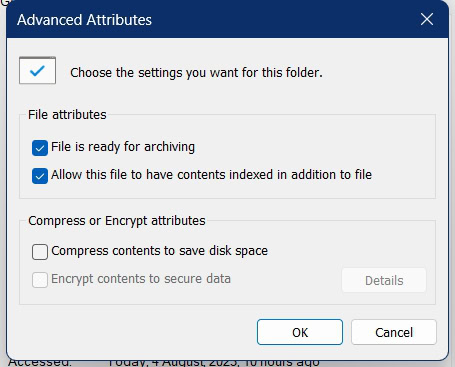
For Windows 10 Home and Windows 11 Home users, you will have to rely on third-party solutions such as 7-Zip to create encrypted archives or VeraCrypt for creating virtual encrypted disks.
How to encrypt files and folders in Windows Professional and Enterprise Editions
If you are using the Professional or Enterprise Editions of Windows, you have an easy and straightforward way to encrypt your files and folders. Here’s how:
- In Windows File Explorer, right-click on the file or folder.
- Select Properties > Advanced.
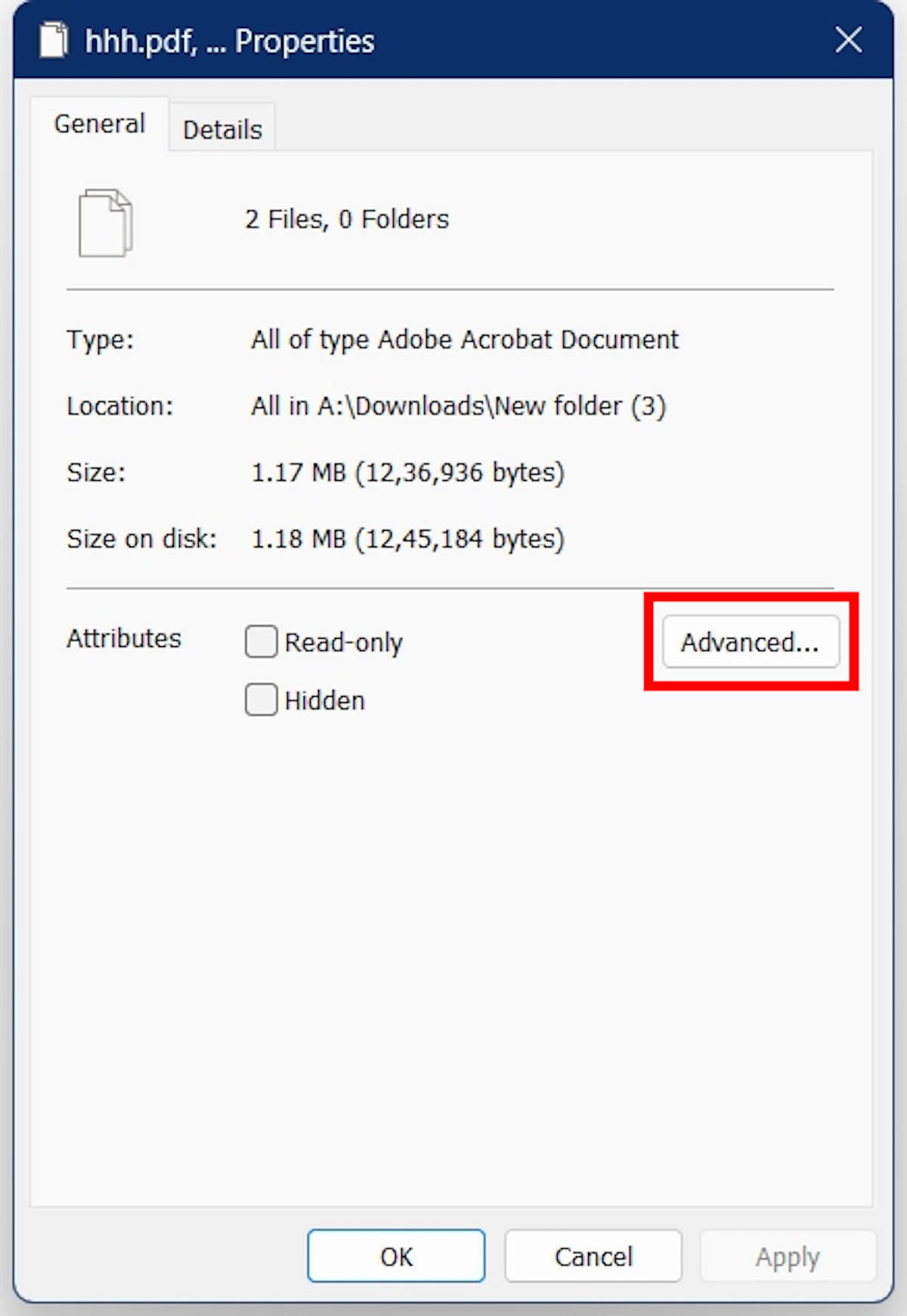
- Select Encrypt contents to secure data.
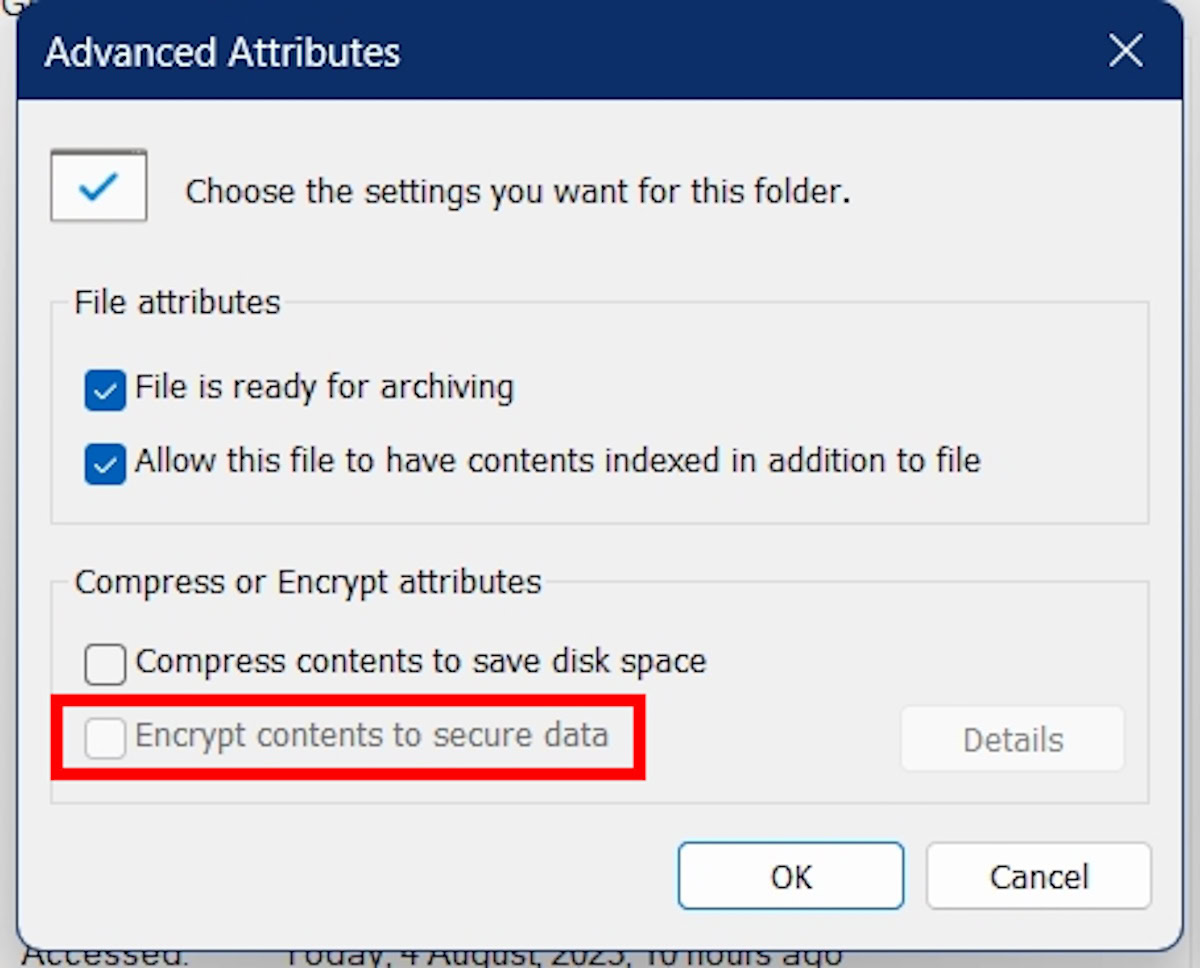
- Click OK, then Apply, and OK once again.
How to encrypt files and folders in Windows using 7-Zip
7-Zip is a file compression software that can also be used to encrypt your files during this compression process. It uses AES-256 encryption, the strongest encryption level you can use on your personal files. It cannot be cracked with brute force within a reasonable amount of time and takes an extraordinary amount of time, resources, skill, and luck to be bypassed. As such, it is perfect for your regular encryption needs.
With 7-Zip, you must create an archive of your files and folders if you want them to be encrypted. Once encrypted, the archive would need the password you set to open. The process is the same as creating a zip file, with just some attention paid to the encryption options.
Follow these steps to create an encrypted archive of your file or folder:
- Download and install 7-Zip on your Windows computer.
- In Windows File Explorer, navigate to the files and folders you want to encrypt. You can select multiple files by holding Ctrl and clicking with your mouse. You can also create a folder of these files and encrypt the folder. 7-Zip preserves your folder structure, so you can create as many sub-folders within folders as you need.
- Once your files are selected, right-click on them and select 7-Zip > Add to archive.
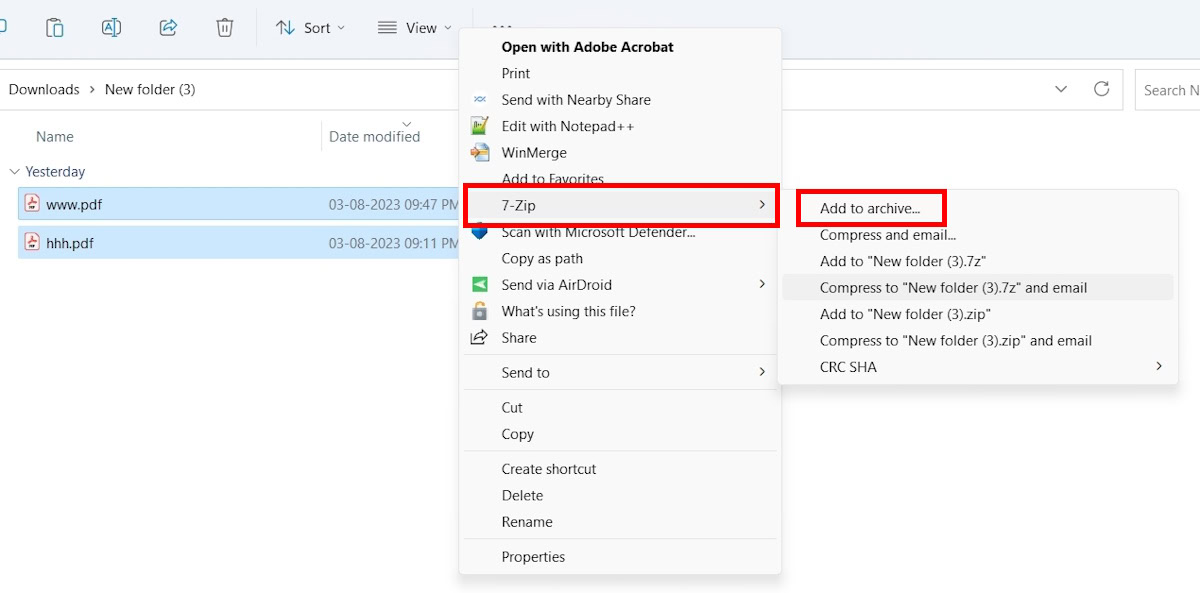
- In the Add to Archive dialog box that opens, you can spot the Encryption section in the bottom right corner. Here, you will be prompted to set an encryption password, an encryption method (we recommend AES-256), and whether you want to encrypt file names too.
- If you forget this password, you can no longer open the archive and access your files.
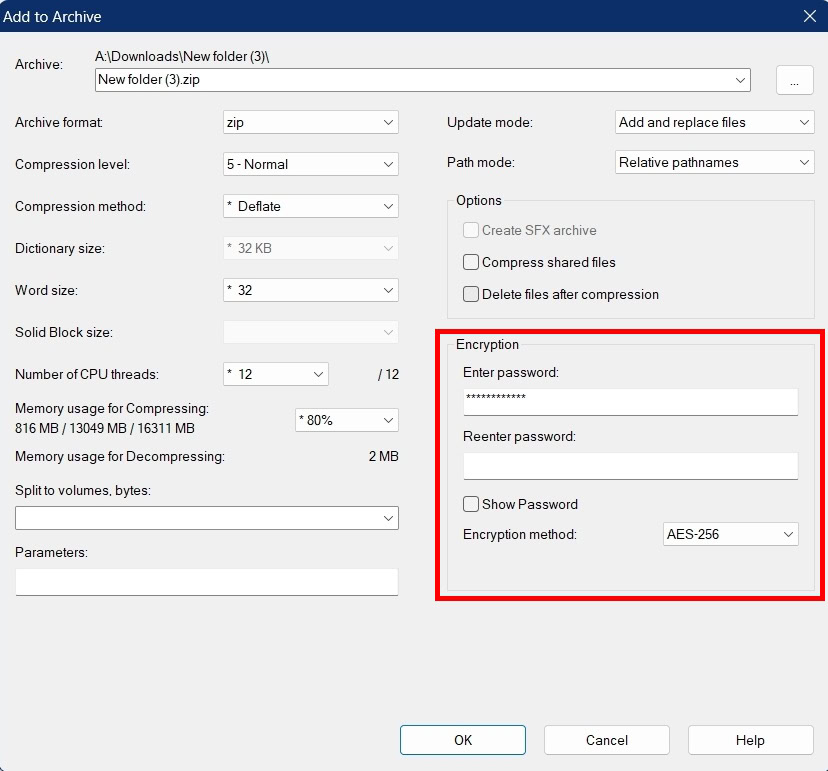
- In the Add to Archive dialog box, you can set other parameters for your archive file as needed. If you need assistance, here are some recommended settings:
- Archive format: ZIP
- Compression level: 5 – Normal
- Update mode: Add and replace files
- Path mode: Relative pathnames
- Encryption method: AES-256
- Click OK to create the archive.
Your encrypted archive has now been created. You can only open this archive file with your set password.
When you need to open this file, follow these steps:
- Select the file, right-click on it, and select 7-Zip > Extract here.
- Enter your password for decryption and click OK.
FAQs
BitLocker is available on Windows 10 Professional, Windows 10 Enterprise, and Windows 10 Education Editions. BitLocker is not available on Windows 10 Home Edition.
OS-level folder encryption is not available on Windows 10 Home Edition and is only available on Windows 10 Professional, Windows 10 Enterprise, and Windows 10 Education Editions. On these, you can right-click on a file or folder, select Properties > Advanced and select Encrypt contents to secure data.